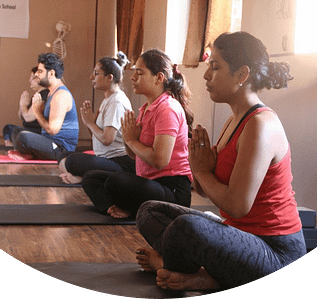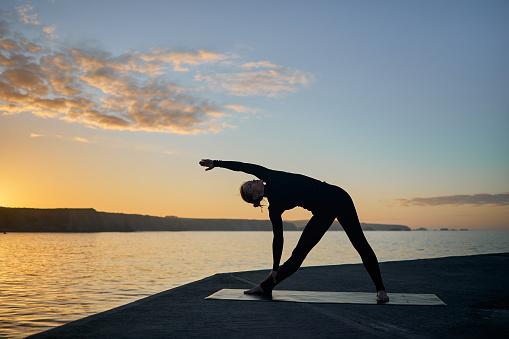Yoga teacher training is a transformative journey that allows individuals to deepen their understanding of yoga and share their knowledge with others. However, many aspiring yogis wonder how much experience is necessary before embarking on this path. In this article, we will explore the importance of experience in yoga teacher training and provide guidance on determining the level of experience required.
Benefits of Yoga Teacher Training
Before delving into the experience needed, it's crucial to understand the benefits of yoga teacher training. Such training equips individuals with comprehensive knowledge of yoga philosophy, anatomy, alignment, and teaching methodology. It also enhances personal practice, fosters self-discovery, and promotes physical and mental well-being.
Importance of Experience
Experience forms the foundation for effective yoga teaching. While there isn't a fixed requirement, having a solid background in yoga practice is essential. Experience allows aspiring teachers to develop a strong personal practice, gain insights into different styles and techniques, and build a deep connection with yoga's principles.
Determining the Level of Experience
To assess the level of experience necessary for yoga teacher training, it's helpful to categorize it into three levels: beginner, intermediate, and advanced.

Beginner Level
At the beginner level, foundational knowledge and a regular practice are important. Aspiring teachers should have a basic understanding of yoga asanas (poses), pranayama (breathing techniques), and meditation. It's recommended to have at least six months to a year of consistent practice before considering teacher training.
Intermediate Level
At the intermediate level, practitioners should have a solid grasp of yoga fundamentals and a consistent practice of one to three years. They should be familiar with various asanas, their modifications, and have a deeper understanding of yoga philosophy. Developing a consistent meditation practice is also beneficial.
Advanced Level
At the advanced level, practitioners should have a dedicated practice of at least three to five years. They should have a broad knowledge of yoga, including advanced asanas, sequencing, and pranayama techniques. It's important to have a strong understanding of anatomy, alignment principles, and the ability to adapt practices to individual needs.
Gaining Experience through Practice
Experience is primarily gained through consistent practice. Regularly attending classes, workshops, and retreats can provide exposure to different teaching styles and philosophies. Practicing with experienced teachers and exploring various yoga traditions can broaden knowledge and deepen the understanding of yoga as a whole.
Expanding Knowledge and Skills
Apart from regular practice, aspiring teachers should actively expand their knowledge and skills. This involves reading books, attending workshops, and engaging in online courses related to yoga. Exploring topics such as anatomy, philosophy, and teaching methodology helps develop a well-rounded understanding of yoga.
The Role of Self-Practice
Self-practice plays a vital role in becoming a yoga teacher. Dedicate time to personal practice, exploring asanas, pranayama, and meditation. Self-reflection, mindfulness, and maintaining a journal can enhance self-awareness, allowing for a more authentic and effective teaching experience.

Developing Teaching Skills
Alongside personal practice, aspiring teachers should focus on developing teaching skills. This involves taking workshops or courses specifically designed for teaching methodology, sequencing, and hands-on adjustments. Building a solid foundation in teaching techniques helps create a safe and supportive environment for students.
Mentoring and Observation
To further enhance teaching skills, it is beneficial to seek mentoring from experienced yoga teachers. Finding a mentor who can provide guidance, feedback, and support is invaluable. Additionally, observing experienced teachers in their classes allows aspiring teachers to learn different teaching styles, class management techniques, and effective communication with students.
Building Confidence
Confidence is crucial when stepping into the role of a yoga teacher. As experience accumulates, confidence grows. Practicing teaching with friends, family, or fellow practitioners can help develop confidence in verbal cues, demonstration, and holding space for others. Embracing feedback and learning from mistakes is part of the journey towards becoming a competent and confident yoga teacher.
Continuing Education
Yoga is a vast and ever-evolving discipline. Even after completing a yoga teacher training program, it is essential to continue learning and expanding knowledge. Attending workshops, conferences, and specialized training programs keeps teachers updated with the latest research, trends, and practices in yoga. Continuing education deepens expertise and enriches the teaching experience.
While there isn't a fixed threshold of experience required before embarking on yoga teacher training, a strong foundation and a consistent practice are essential. Beginners should focus on developing a solid understanding of basic yoga principles, while intermediate practitioners should deepen their knowledge and refine their personal practice.
Advanced practitioners should have a comprehensive understanding of yoga and a dedication to self-improvement. Gaining experience through regular practice, expanding knowledge, and developing teaching skills are vital steps in the journey towards becoming a proficient yoga teacher.
